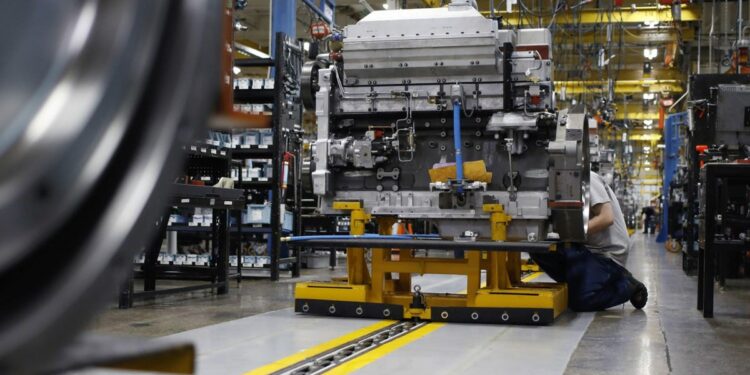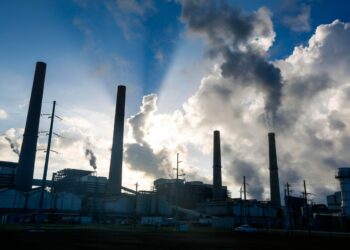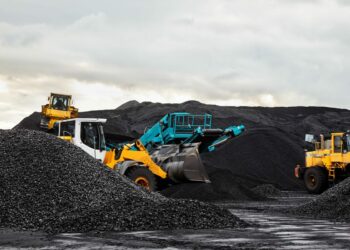As the energy transition continues along a fitfully evolving progression, it becomes increasingly apparent that getting to the “net zero” emissions goals set by the various global annual climate gatherings will be far more complex than has been thus far advertised. There is in fact a pressing and growing need to develop a wide variety of carbon-reduction solutions that can meet the needs of widely-disparate applications.
Nowhere is this need more apparent than in the transportation sector, most especially in the realm of heavy-duty vehicle and engine applications. To that end, Cummins
CMI
, one of the world’s largest providers of vehicle power solutions, is developing a range of new engine options that will allow companies to switch from diesel to natural gas, utilize hydrogen if and when that solution becomes available, and includes fuel cells, hybrids and electric applications as well.
In a recent interview, Jennifer Rumsey, President and Chief Operating Officer at Cummins, told me her company’s diverse line of solutions is not just about meeting the unique needs of its various customers, but also about achieving its own net-zero goals.
“We’re really focused on what we call Destination Zero, our strategy to decarbonize our products and become a catalyst to decarbonize that industry,” Rumsey said. “We think [getting there] takes that entire Cummins business. We need to advance a range of solutions to meet varied customer needs. So, we’re continuing to focus on investing and innovating in our engine-based solution, because we believe we need to start today, and there’s more we can do to reduce carbon emissions from diesel and other internal combustion engines.”
Where the passenger car sector has to this point been focused almost exclusively on the development of electric vehicles to drive its transition, Rumsey knows that the needs of her customers are not so simple. “For passenger cars, buyers tend to make what I describe as an emotional decision,” she said. “What car do I want? What does it look like?”
But Rumsey says that Cummins’ customers in industries like mining, energy, long-haul trucking, and buses, tend to make buying decisions based mostly on economics. “They’re running a business. They’re supporting people’s lives when you think about fire trucks or backup gensets for hospitals. So, they must consider the cost of buying and operating that piece of equipment; they need to know that it’s reliable and that it will meet their needs. Those needs are very diverse.”
Rumsey said that Cummins is offering electric battery solutions for medium-duty bus applications today, because they are closer to passenger cars in terms of number of miles driven, the power needed, and the ability to return to a depot at night for recharging. But, she said, “Compare that to a heavy-duty truck that is running hundreds of miles a week, crisscrossing the country. For those, we are still using engine-based solutions, and we believe will need engine-based solutions for some time.”
Noting that Cummins has a long and proud legacy producing diesel-fueled engines, Rumsey was careful to note that getting to net-zero should not just be about replacing the existing system, but also about making existing technologies more efficient. “Diesel is a part of the solution,” she told me. “This is an important part of our message, and in fact I was just in Washington, DC recently advocating for regulation and incentives to support the technology transition.
“We can make a big difference by improving the efficiency of diesel engines in the next decade. Those products will be out there for many years beyond that. We shouldn’t just focus on zero only; we need a combination of advancing zero and improving engine-based products that we have today.”
But Cummins is also developing alternatives in the realm of heavy-duty trucks. Partnering with Chevron
CVX
and Wal-Mart, Cummins recently announced a demonstration project involving Cummins engines fueled by renewable natural gas.
“We see that we will have growing adoption of natural gas engines,” she said. “It won’t be a broad solution that reaches everyone in the market because of the infrastructure requirements. But big fleets have an ability to work with fueling companies to build out an infrastructure that can support important routes to them. They’ve talked about that in the past – I think the cost of fuel and the work that we’ve done to advance the capabilities of those systems, and not just the engine, have made this more viable.” At current prices, Rumsey noted that prices for natural gas fuel are about half the price for diesel.
As I wrote in a recent piece, renewable natural gas (RNG) can be sourced from landfills, farms and ranching operations and various other sources. For this joint venture, Chevron will be the fuel provider, leveraging partnerships it already has in place with Brightmark LLC and California Bioenergy LLC to produce the RNG from dairy farms. RNG actually achieves a net-negative emissions profile by capturing what otherwise would be fugitive methane emissions and converting them into compressed natural gas fuel.
Like any other business, Rumsey says that Cummins need regulatory consistency and predictability to most effectively plan and execute its business activities. To that end, Cummins has invested a great deal of time advocating for both a price on carbon – preferably via a carbon tax – and for the setting of nationwide emissions standards.
“For us as a business, we would prefer nationwide standards, where we can develop products that serve the nation,” she said. “We spend a lot of time advocating for that with EPA and CARB (the California Air Resources Board), trying to get alignment on how we get to zero, a journey that we all want to take, in a way that makes sense for the country and the business.”
Like her counterparts in the oil and gas business, Rumsey believes consistent, clear standards would help drive the development of new technologies and applications and speed their viability. “That advances the technology, brings costs down as it scales, helps us build infrastructure in a stepwise manner,” she said. “We want them to challenge us and drive innovation, while also still being achievable. We have taken that same advocacy approach across the last couple of decades. We do need that consistency and lead time in regulations for us to really have certainty in the major investments we are making in new products.”
The energy transition today is at a crossroads. It is becoming painfully obvious that the “incredible transition” envisioned by President Joe Biden and his administration, in which fossil fuels can simply be replaced by a few chosen industries (wind, solar and electric vehicles) is an unrealistic notion based largely on wishful thinking. There is also a growing realization that efforts by governments in the U.S. and Europe to try to subsidize such a transition rapidly into existence, with politicians and bureaucrats picking winners and losers in the process, have caused more problems than they have solved.
To be successful, any truly viable energy-based business mainly needs one thing from the government: regulatory consistency and certainty. Do that, then get out of the way and let companies like Cummins get to work.











